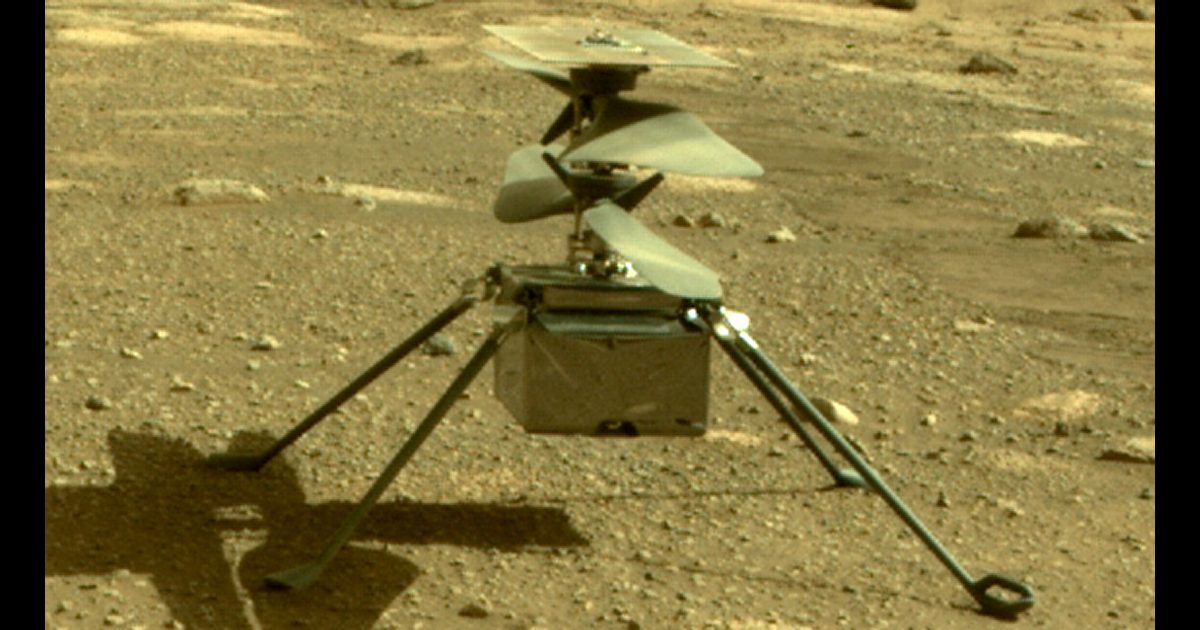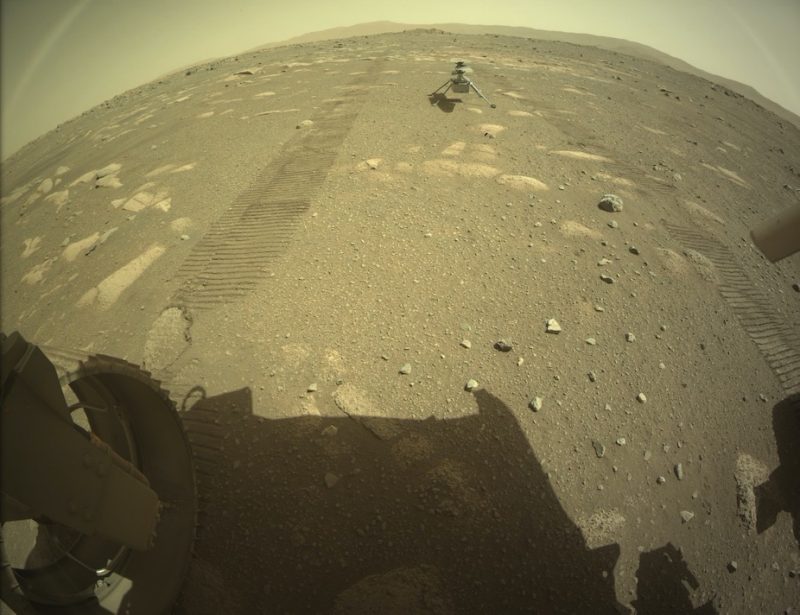
Image: NASA JPL
The solar powered helicopter drone Ingenuity’s 471-million-kilometre journey aboard Perseverance ended yesterday with a 10cm drop from the rover’s belly on to the surface of Mars.
Ingenuity is a technology demonstration to test powered flight on another world – and all going well, this will be the first time such a feat has occurred.
Weighing 1.8 kilograms and with a rotor length of 1.2 metres from tip to tip, the Mars helicopter is powered by a solar panel charging a lithium-ion battery pack (six Sony Li-ion cells) that will provide enough energy for one 90-second flight per Martian day.
It was a year ago that Ingenuity was stowed in its delivery system on Perseverance’s belly here on Earth.
Over the past couple of weeks, NASA has been running through the process of deploying Ingenuity on to Mars’ surface. This included dropping the debris shield, unlocking the release system, bringing the helicopter upright and unlocking the landing legs before dropping it to the surface. There’s a good video here demonstrating how the helicopter has been released.
After release, the Perseverance rover then moved around 5 metres away from the helicopter.
Next Steps For Ingenuity
There’s still a lot to do before Ingenuity can take a crack at making its first flight.
- The rover needs to keep warm autonomously, using its internal heaters to survive temperatures as low as -90C during the night.
- It needs to charge autonomously with its solar panel. Power consumption and charging will be monitored over multiple Martian days.
- The rotor blades will be unlocked.
- Rotor blades will be spun up for the first time.
- The blades will then be spun up to full speed (approximately 2,400 RPM), but the helicopter will remain on the surface.
Originally it was hoped the first test flight would occur around April 8, but that’s now been pushed out to April 11 being the earliest date. For the first flight, the helicopter will hover 3 meters above the surface for up to 30 seconds.
All this is happening under incredibly challenging conditions. In addition to the low temperatures, Mars’ thin atmosphere makes it difficult to achieve lift. Due to communications lag, commands need to be sent well in advance and results can take quite a while to be received. Once the “fly” command is issued, it will be hours before data starts streaming back to Earth via Perseverance.
Ingenuity is part of a much larger program to explore Mars that is providing a continuous flow of scientific information and discovery through robotic orbiters, landers and mobile laboratories interconnected by a high-bandwidth Mars/Earth communications network.
You can learn more about Ingenuity here and the Mars exploration program here.


 RSS - Posts
RSS - Posts



It was actualy an averaged 9.8724 CM per leg, drop onto the surface, followed by an averaged 0.4247 CM per leg, subsidance into the dust.
Just saying.